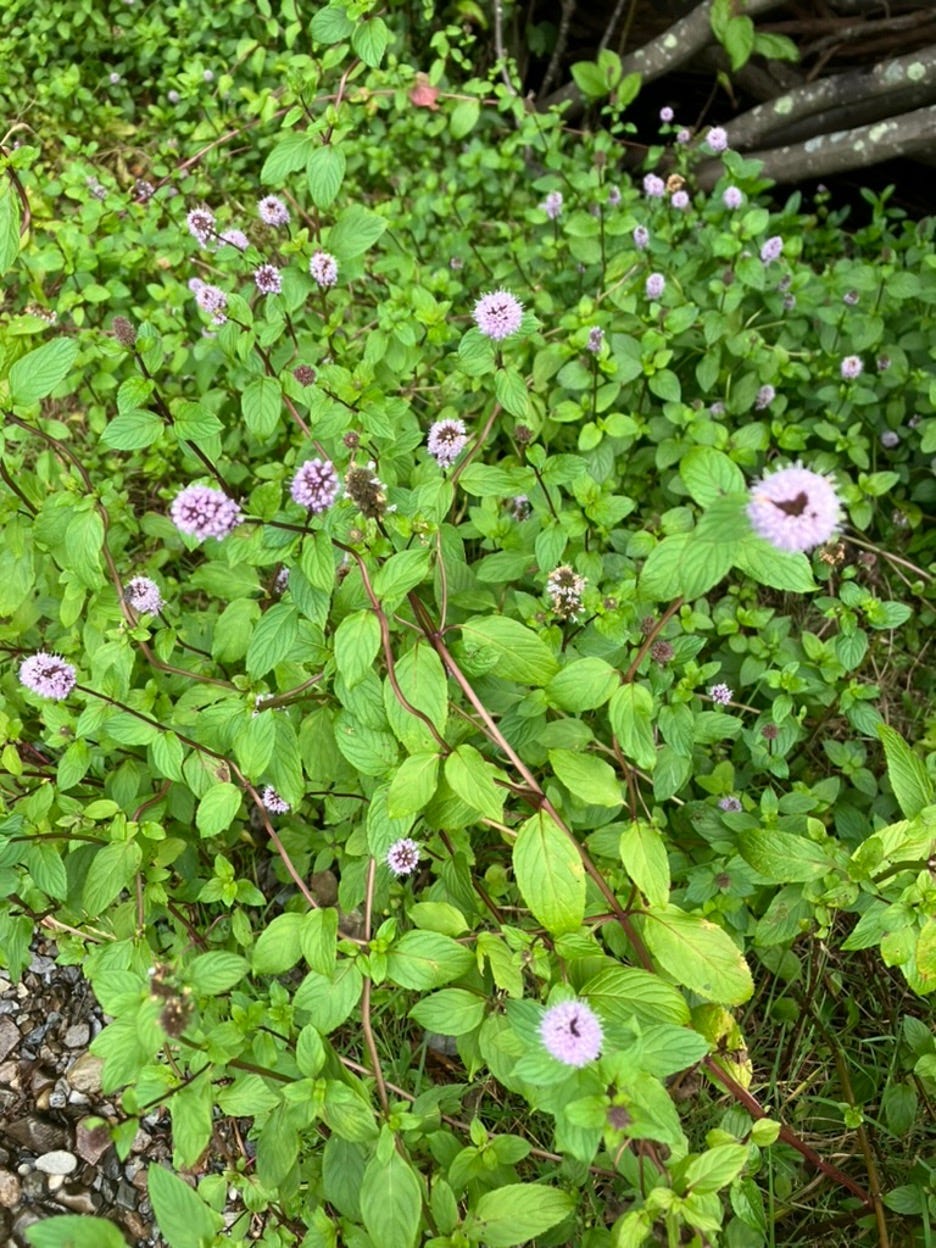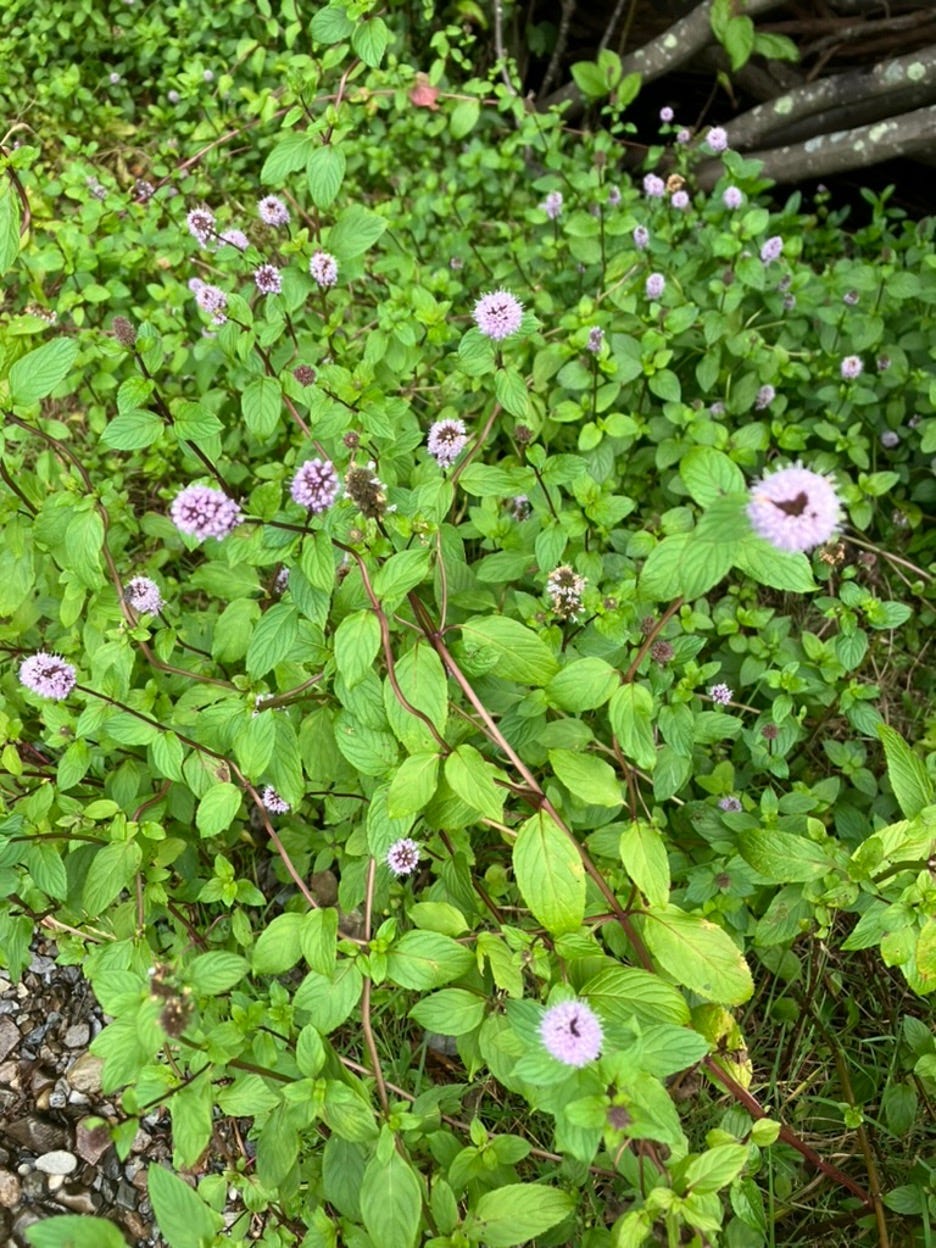Well, this semester has come to a close. Highlights included hearing from so many of you from around the world, hitting 10,000 subscribers, and posting pictures from my Vermont garden in August posts.
That the crazy idea - to write about lactation on Substack - has generated so much interest is amazing to me. Back when this started, many of my colleagues rolled their eyes when breastfeeding was mentioned, and, no one had heard of Substack. But here we are, growing with each post and going strong.
The Lactation College on Substack is meant to help and educate. Being a new mother, a new parent is hard. Breastfeeding for many is hard. Emotions run strong. Yet the very people these new parents turn to for help may have received zero education in their years and years of training on breastfeeding and are working in antiquated systems. We can change that.
Thank you all for being here and thank you for all you do to help mothers and babies.
My timing was really off this semester – to our test takers I am sorry about that. I thought the test was happening in the end of September. That and an on-site assessment from Baby-Friendly assessors at our hospital rolled in and buried me. No excuses though, I will do better.
The plan now is that I will take a few weeks off from posting on the free side. The posts across the paywall (Research Thursday) will stay up and continue and then we will start up a new semester on October 7, 2024. The new semester will end in mid March 2025.
The next semester starts on October 7, 2024.
I think of The Lactation College on Substack to be like a free SAT prep course. It will help you prepare for the IBCLC exam or help you get ready for that newborn elective that is coming up. And … it’s free. If you found this helpful you can help to pay it forward so others can benefit from it by staying subscribed and telling a friend.
And yes, if you took the test, did The Lactation College on Substack help and what can we do better? Also, when you get your score let me know so I can celebrate with you. babydoctor53@gmail.com
I leave you with this article. You know a lot of the information in it from our studies but there is even more.
The Economist. Science and technology. The motherlode
Breast milk’s benefits are not limited to babies
Some of its myriad components are being tested as treatments for cancer and other diseases. September 11, 2024. The Economist
In a talk she gave in 2016, Katie Hinde, a biologist from Arizona State University, lamented how little scientific attention was commanded by breast milk. Up until that point, she said, both wine and tomatoes had been far more heavily studied. Eight years on, alas, that remains true.
What is also true—and this was the serious point of Dr Hinde’s talk—is that scientists have been neglecting a goldmine. Unlike wine or tomatoes, breast milk's physiological properties have been honed by evolution to be healthy. In babies it can reduce inflammation, kill pathogens and improve the health of the immune system. As a result, some components of breast milk are now being studied as potential treatments for a host of adult conditions, including cancer, heart disease, arthritis and irritable bowel syndrome (IBS). Scientists may never look at breast milk in the same way again.
The exact composition of breast milk remains slightly mysterious. After water, its most abundant components are lactose; fatty compounds known as lipids; and sugar molecules called human milk oligosaccharides (HMOs). But it also contains a host of proteins, vitamins, minerals, enzymes, hormones and live cells from the mother’s body. Its richness continues to surprise: in 2009, for example, more than 250 previously unknown proteins were identified within it; in 2015 it yielded up 300 new micro-rna molecules, which regulate gene expression throughout the body. “There is lots of room for discovery”, says Meghan Azad at the University of Manitoba, in Canada.
The motherlode
In a recent study of milk from 1,200 mothers on three continents, Dr Azad and her colleagues found roughly 50,000 small molecules, most of them unknown to science. By using artificial-intelligence (ai) models to analyse this list of ingredients, and link them to detailed health data on babies and their mothers, they hope to identify components beneficial for specific aspects of babies’ development.
Such work would add much needed rigour to the field. At present, identifying which of these myriad components to study often occurs at random. In one case, doctors noticed that preterm babies who are fed breast milk, as opposed to formula, had dramatically lower incidence of necrotising enterocolitis (nec), an often-fatal disease in which intestinal tissue becomes inflamed and dies. That observation prompted research on whether any specific components in breast milk could be conferring this protection.
HMOs, which are known to have anti-inflammatory effects, may be partly responsible. That has led to the idea that HMOs could be used as therapeutics for diseases that involve inflammation. In a study in mice published in 2021, Lars Bode at the University of California, San Diego, and his colleagues reported that one HMO reduced the development of atherosclerosis, the blockage of arteries that leads to heart attack and stroke. Dr Bode says that in other experiments with mice, the results of which are yet to be published, HMOs have shown promise in treating arthritis and multiple sclerosis. Clinical trials with humans will be far more expensive.
Other discoveries have come about by happenstance. In 1995 scientists at Lund University, in Sweden, reported a discovery they had stumbled upon while studying breast milk’s antimicrobial properties. They had added some of its constituents to a dish containing lung-cancer cells, hoping to see them fend off bacteria. Instead, remarkably, the cancer cells died off. The culprit was a molecule that they named hamlet, formed when two ingredients in breast milk (alpha lactalbumin, a protein, and oleic acid) combined.
Since then, the research team, led by Catharina Svanborg, has been assessing hamlet’s potential as a cancer treatment. The molecules work their magic by entering the nuclei of cancer cells and reprogramming their DNA, blocking essential functions. An added advantage of this method is that the cancer cells die in a way that spares the surrounding healthy tissue. In results of a small, early-stage study published on September 10th in Cancer Medicine, a journal, a drug developed from hamlet reduced the size of 88% of tumours in bladder- cancer patients with no side-effects, other than discomfort at the injection site. Results in mice with brain and colon cancer are also promising.
… the neglect of breast milk will rank “as one of the great embarrassments of scientific history.”
It is not only the molecules in breast milk that could have health benefits. Until about 15 years ago, says Dr Azad, it was assumed that breast milk was largely sterile. But genetic-sequencing tools have revealed it contains a wide variety of bacteria. Some, such as Bifidobacterium, a particularly beneficial bacterium that feeds exclusively on HMOs, can survive the trip into the baby’s gut, where it strengthens the gut barrier; regulates immune responses and inflammation; and prevents pathogenic bacteria from adhering to the lining of the gut. That makes it an ideal candidate for use in probiotics, live bacterial supplements used to remedy the gut’s ecosystem.
The immune-boosting properties of Bifidobacteria are now being explored in patients of all ages with compromised immunity. Prolacta Bioscience, a biotech firm in California, is conducting a clinical trial of one sub-species called B. infantis, combined with HMOs, in adults undergoing bone-marrow transplants for blood cancer (a procedure that wipes out the immune system). There is some evidence to think this might work: in a small trial in 2019 at the Cincinnati’s Children Hospital, breast milk given to children aged 0-5 years after a bone- marrow transplant reduced infections and other complications.
Because Bifidobacteria feed on HMOs, the sugar molecules could help beneficial bugs proliferate. That, in turn, can help patients with impaired gut microbiomes, such as those with IBS. Recent trials of HMOs as therapy for this condition— though either small-scale or lacking control groups—have suggested that they are safe, well-tolerated and can improve symptoms. More definitive trials are under way.
Other exciting results have emerged from studying breastfeeding itself. When babies breastfeed, some of the milk ends up in their nasal cavity. It is possible, say scientists, that it could then make its way into the brain. In a small study in 2019 doctors at the Children’s Hospital in Cologne nasally administered maternal breast milk to 16 premature babies with brain injury. The babies subsequently had less brain damage, and required less surgery, than those who did not receive the treatment.
Similar results were reported in May by researchers at the Hospital for Sick Children in Toronto. In a small safety study, they administered intranasal breast milk as a preventive treatment for brain haemorrhage in premature babies; 18 months later, babies so treated had better motor and cognitive development, and fewer vision problems, than those fed only the usual way. Though bigger trials are needed to confirm these results, stem cells in the milk may be repairing some of the damage.
It is too early to tell whether any blockbuster drugs will result. But breast-milk scientists are starting to feel vindicated. For Bruce German from the University of California, the neglect of breast milk will rank “as one of the great embarrassments of scientific history.”
Tema #66. Fin de Semestre: Feliz Otoño
Bueno, este semestre ha llegado a su fin. Los aspectos más destacados incluyeron escuchar a muchos de ustedes de todo el mundo, alcanzar los 10,000 suscriptores y publicar fotografías de mi jardín de Vermont en publicaciones de agosto. Es difícil de creer que esta loca idea, escribir sobre lactancia en Substack, un tema que la mayoría puso en blanco y un foro del que nadie había oído hablar, haya crecido tanto y parezca estar ayudando a la gente. Gracias a todos por estar aquí y gracias por todo lo que hacéis para ayudar a las madres y a los bebés.
Mi tiempo realmente no fue el adecuado este semestre; a nuestros examinados, lo siento. Pensé que la prueba se realizaría a finales de septiembre. Eso y una evaluación in situ de los asesores de Baby-Friendly en nuestro hospital llegaron y me enterraron. Pero no hay excusas, lo haré mejor.
El plan ahora es tomarme unas semanas libres para dejar de publicar en la parte gratuita. Las publicaciones en el muro de pago (jueves de investigación) permanecerán activas y continuarán y luego comenzaremos un nuevo semestre el 7 de octubre de 2024. El nuevo semestre finalizará a mediados de marzo de 2025.
El próximo semestre comienza el 7 de octubre de 2024.
Creo que The Lactation College on Substack es como un curso gratuito de preparación para el SAT. Le ayudará a prepararse para el examen IBCLC o le ayudará a prepararse para la asignatura optativa para recién nacidos que se avecina. Y… es gratis. Si esto te resultó útil, puedes ayudar a retribuirlo para que otros puedan beneficiarse manteniéndose suscrito y contándoselo a un amigo.
Y sí, si realizó la prueba, ¿le ayudó The Lactation College en Substack? ¿Qué podemos hacer mejor? Cuando obtenga su puntuación, ¡hágamelo saber! babydoctor53@gmail.com

Aquí tenéis un artículo interesante, escrito en inglés. The Economist




